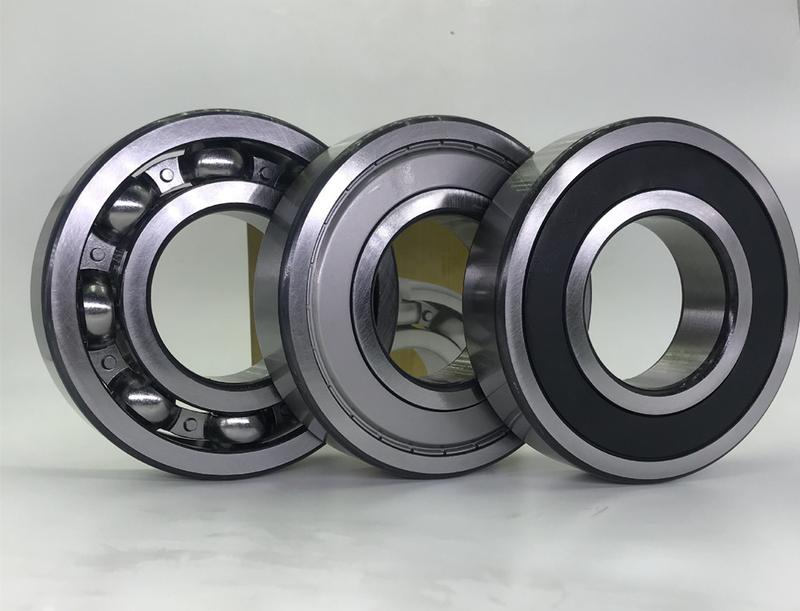The Definitive Guide for Volution Bearing
The Definitive Guide for Volution Bearing
Blog Article
Some Known Details About Volution Bearing
Table of ContentsTop Guidelines Of Volution BearingThe Buzz on Volution BearingThe Buzz on Volution BearingVolution Bearing Can Be Fun For Everyone
An axial (or thrust) bearing lots is when force is identical to the axis of the shaft. A radial bearing tons is when force is perpendicular to the shaft.Below is a fast reference for the sort of bearing lots and the most effective round bearing for the job: Radial (vertical to the shaft) and light lots: Pick radial sphere bearings (also called deep groove sphere bearings). Radial bearings are a few of the most usual sorts of bearings on the market.
The spheres speak to the raceway at an angle which better supports combination lots. Roller bearings are developed with round rollers that can distribute loads over a larger surface than sphere bearings. They have a tendency to function much better for heavy tons applications. Below is a fast recommendation for the sort of bearing tons and the most effective roller bearing for the work: Radial (vertical to the shaft) loads: Select standard cylindrical roller bearings Axial (propelled) (parallel to the shaft) loads: Pick round thrust bearings Integrated, both radial and axial, tons: Pick a taper roller bearing The rotational rate of your application is the next element to look at when picking a bearing - https://packersmovers.activeboard.com/t67151553/how-to-connect-canon-mg3620-printer-to-computer/?ts=1714987899&direction=prev&page=last#lastPostAnchor.
They carry out much better at higher speeds and provide a greater speed range than roller bearings. One reason is that the call between the rolling element and the raceways in a round bearing is a point as opposed to a line of call, like in roller bearings. Due to the fact that rolling aspects press into the raceway as they surrender the surface area, there is much less surface area contortion happening in the factor lots from ball bearings.
The Greatest Guide To Volution Bearing

If this occurs, a simple and typical solution is to switch the ball bearing material from steel to ceramic. This maintains the bearing dimension the exact same yet provides roughly a 25% greater rate score. Because ceramic product is lighter than steel, ceramic rounds generate much less centrifugal force for any provided speed.
One reason is that the rounds are smaller sized and smaller rounds consider much less and produce less centrifugal pressure when revolving. Angular call bearings also have a built-in preload on the bearings which functions with centrifugal forces to properly roll the rounds in the bearing. If you are designing a high-speed application, after that you'll desire a high-precision bearing, usually within the ABEC 7 precision class.
Volution Bearing Things To Know Before You Get This
When the bearing is being utilized at high rates, the balls swiftly roll over the bearing raceway with much less dependability which can lead to a bearing failure. High accuracy bearings. manufacturer watkinsville ga are made with strict requirements and have really little discrepancy from the specifications when created. High precision bearings are dependable for applications that go quick since they ensure great sphere and raceway communication.
Some applications, like reducing tool spindles, will just enable a tiny deviation to take place on its rotating elements. If you are engineering an This Site application similar to this, after that choose a high precision bearing due to the fact that it will certainly create smaller sized system runouts due to the tight tolerances the bearing was made to. Bearing rigidness is the resistance to the pressure that causes the shaft to deviate from its axis and plays an essential function in lessening shaft runout.

When the angular contact bearings are mounted, the offset is removed which creates the balls to press into the raceway without any kind of outside application force. This is called preloading and the process enhances bearing rigidness even prior to the bearing sees any type of application pressures. Understanding your bearing lubrication demands is essential for choosing the right bearings and needs to be considered early in an application layout.
Not known Facts About Volution Bearing
Lubrication develops a film of oil between the rolling aspect and the bearing raceway that assists avoid rubbing and getting too hot. One of the most typical kind of lubrication is oil, which contains an oil with a thickening agent. The thickening representative keeps the oil in position, so it will not leave the bearing.
This is called the application or bearing n * dm worth. Prior to you select a grease, you require to locate your applications ndm value.
Compare your ndm worth to the grease's max speed worth, located on the datasheet. If your n * dm value is greater than the oil max speed worth on the datasheet, then the grease will not be able to supply enough lubrication and early failing will occur. An additional lubrication option for high-speed applications are oil mist systems which blend oil with pressed air and after that infuse it right into the bearing raceway at metered intervals.
Report this page